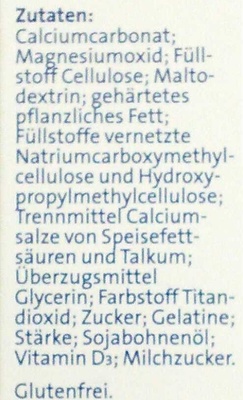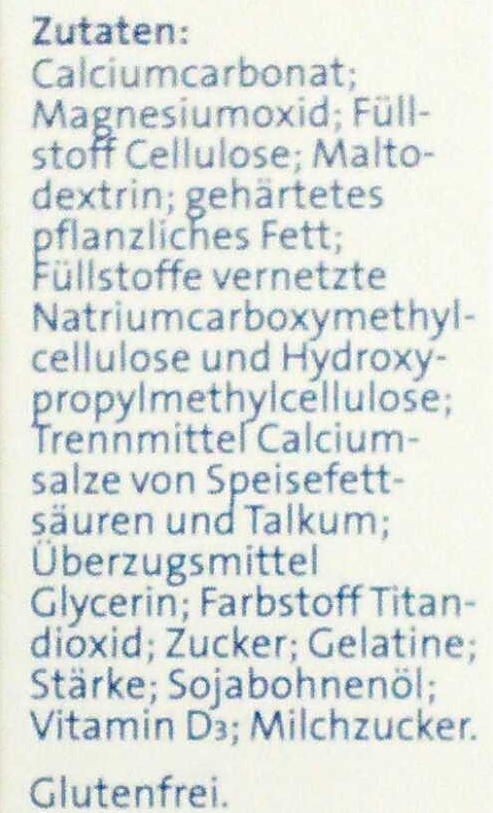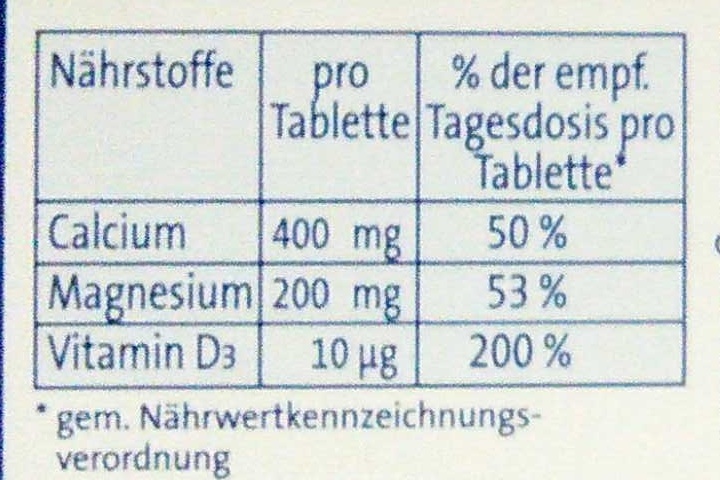Magnesium + Calcium + D3 - Abtei - 76 g
This product page is not complete. You can help to complete it by editing it and adding more data from the photos we have, or by taking more photos using the app for Android or iPhone/iPad. Thank you!
×
Barcode: 4026600440332 (EAN / EAN-13)
Quantity: 76 g
Brands: Abtei
Categories: Non food products, Dietary supplements, Open Beauty Facts, Vitamins
Labels, certifications, awards: No gluten
Stores: Amazon
Countries where sold: Germany
Matching with your preferences
Health
Additives
Ingredients analysis
The analysis is based solely on the ingredients listed and does not take into account processing methods.
Serving size:
1 Tablette
⚠
️Serving size is too small (5 g / 5 ml or less) to calculate 100 g / 100 ml values and perform any further nutritional analysis
Environment
Packaging
Transportation
Report a problem
Data sources
Product added on by hangy
Last edit of product page on by manoncorneille.
Product page also edited by packbot, roboto-app.
If the data is incomplete or incorrect, you can complete or correct it by editing this page.







